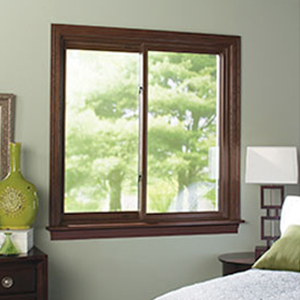Condensation is a sure sign that your windows should be replaced.
Windows are an essential barrier in between the extreme, variable weather conditions outside as well as our calm, regular residence temperatures. Home replacement windows tend to have a fifteen to twenty-year life expectancy, so the good news is we do not need to think about replacing them too often. But knowing when it's time to replace them can be difficult. You could be tempted to try and hold out for another season if you recognize the warning signs. But replacing your home windows now could aid you prolong the life of your entire home and also maintain you and your family members warm all winter season long. Right here are a few signs that your windows are not ready for the rough winter months this year.
Drafty Home
As home windows age, they start shrinking, breaking, and also not closing properly, allowing air from within your the home of spurt. As a result of this, your HVAC system battles to keep your residence at a consistent temperature level as well as sends your energy bills escalating. If your home is significantly more drafty or your electrical costs appear to be going up this fall for no noticeable reason, you might want to have your home windows took a look at.
Challenging to Lock
We appreciate having our windows open when the weather behaves, however they should not be open all the moment. Throughout the winter when we're away, your home windows need to be shut in area and locked. Windows with malfunctioning locks is a major safety danger that should be treated as soon as possible to keep your household safe. Usually the lock can be fixed cheaply, but if the home window is having trouble staying open or closed or is leaking air, it might be best to just install a brand-new one.
Condensation Forming
The most significant indication that you require new windows is when condensation begins to form on the within your window when it is closed as well as locked. This is a measure of a likely irreparable flaw as well as should be dealt with as soon as possible to avoid the possible development of mold in the framework, which could infect other areas of your house and also trigger significant damage when left without treatment.
Have you nearly had it with your old, drafty windows?
Is this the year you've chosen to ultimately change your home windows? Changing your windows with new ones includes lots of benefits, including a power performance increase, far better air flow, and better high quality of light in your home. The National Fenestration Ranking Council certifies and also identifies home windows (along with doors and also skylights) on their performance and energy effectiveness. When you're buying new home windows you'll see these ratings on the NFRC tag. In this week's blog, we'll discuss ways to read this label to make certain you're making a notified choice on your brand-new windows.
Warmth Gain as well as Loss
The initial three properties on the tag relate to how the home window carries out when it come to heat gain and loss. Windows gain as well as lose heat in three ways:
Direct conduction with the glass.
Radiation of heat from the sun into the house, and also out of the house from objects in the house.
Air leak through as well as around the home window.
U-factor
This is "The price at which a window, door, or skylight carries out non-solar warm flow." The takeaway below is "The lower the U-factor, the extra energy-efficient the home window, door, or skylight."

Solar Heat Gain Coefficient
The SHGC informs us just how much radiation is confessed with the home window and released as warmth in the home. The lower the number, the much less warm is transmitted. Nonetheless, this doesn't necessarily suggest you want a low SHGC. For example, because a higher SGHC here means the window enables extra warm in, you can enable extra solar warm inside in the winter, which can lower your home heating demands. In this situation, the environment you reside in will certainly play a significant factor in choosing an SHGC rating.
Air Leakage
This quantifies how much air the window allows about a specific stress distinction throughout it. The lower the score, the less air leakage.
Sunshine Transmittance
The following two ratings determine what does it cost? light a window lets right into your home.
Noticeable Passage (VT).
This number in between 0 and 1 procedures what portion of the range of visible light the home window lets through. The higher the portion, the much more light the home window will permit. If you want to use daylighting in your house, you'll want a greater portion. If you wish to lower indoor glare, you may want a lower portion.
Light-to-Solar Gain.
This number is the proportion between the SHGC and the VT. "The higher the number, the a lot more light sent without including too much quantities of warm.".